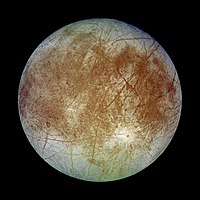
Photo from wikipedia
Peatlands can accumulate organic matter into long‐term carbon (C) storage within the soil profile. This study used solid‐state 13C nuclear magnetic resonance (13C‐NMR) to investigate the transit of organic C… Click to show full abstract
Peatlands can accumulate organic matter into long‐term carbon (C) storage within the soil profile. This study used solid‐state 13C nuclear magnetic resonance (13C‐NMR) to investigate the transit of organic C through a peatland ecosystem to understand the molecular budget that accompanies the long‐term accumulation of C. Samples of biomass, litter, peat soil profile, particulate organic matter, and dissolved organic matter (DOM) were taken from the Moor House National Nature Reserve, a peat‐covered catchment in northern England where both the dry matter and C budget for the ecosystem were known. The results showed that: The interpretation of the 13C‐NMR spectra shows that polysaccharides are preferentially removed through the ecosystem, while lignin components are preferentially retained and come to dominate the organic matter accumulated at depth in the profile. The DOM is derived from the oxidation of both biomass and the degradation of lignin, while the particulate organic matter is derived from erosion of the peat profile. The DOM is differentiated by its proportion of oxidized functional groups and not by its aromatic content. The changes in functionality leading to DOM production suggest side chain oxidation resulting in C‐C cleavage/depolymerisation of lignin, a common reaction within white rot fungi. The 13C‐NMR budget shows that O‐alkyl functional groups are disproportionately lost between primary production and accumulation in the deep peat, while C‐alkyl functional groups are disproportionately preserved. The carbon lost as gases (CO2 and CH4) was estimated to be composed of 93% polysaccharide‐derived carbon and 7% lignin‐derived carbon.
Journal Title: Journal of Geophysical Research
Year Published: 2018
Link to full text (if available)
Share on Social Media: Sign Up to like & get
recommendations!